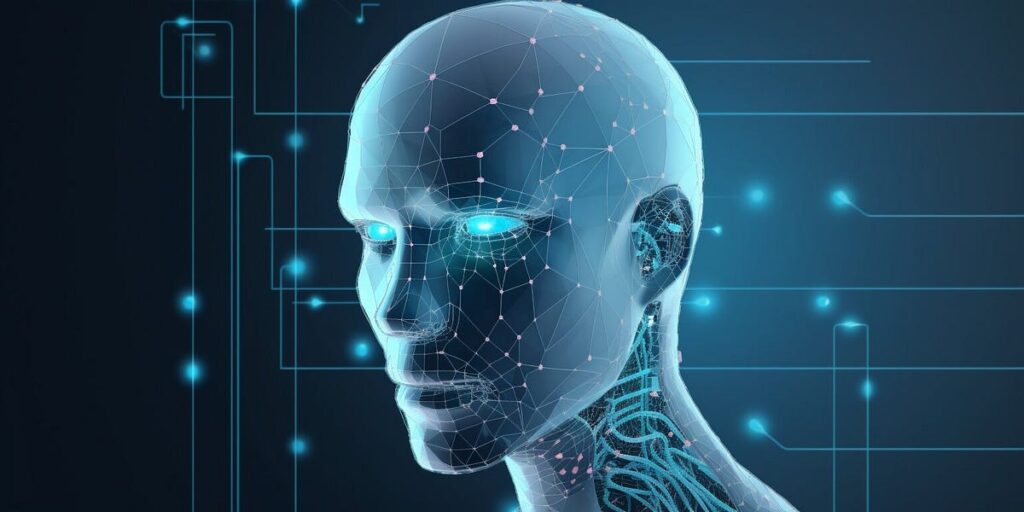The pervasive influence of Artificial Intelligence (AI) is no longer a futuristic concept confined to science fiction novels or specialized research labs.
Today, AI is an integral, almost invisible, component of our daily reality, dramatically reshaping the very fabric of human society. It silently curates our news feeds, dictates our entertainment choices, and even influences our purchasing decisions, fundamentally altering the way we perceive and interact with the world around us.
This profound technological shift is particularly evident in the domain of social connections, where algorithms are acting as the new intermediaries in our relationships, from casual online acquaintances to deeply personal partnerships.
As smart assistants become more sophisticated and social platforms rely heavily on machine learning to optimize engagement, the line between authentically human interaction and algorithmically managed experience continues to blur at an unprecedented pace.
We must critically examine how this deep-seated algorithmic embrace is either enriching our lives by fostering new forms of community or subtly eroding the qualities that make human connection truly meaningful, unique, and irreplaceable.
I. The New Intermediaries: AI in Daily Communication

Artificial Intelligence has fundamentally changed the channels and methods we use to communicate.
It is now the unseen editor and organizer of our digital conversations.
A. Social Media Feeds and Curation:
The algorithms that power platforms like Instagram, TikTok, and Facebook are highly sophisticated. They prioritize content not based on chronological relevance but on a prediction of what will maximize user engagement, essentially acting as personalized editors of our social reality.
This hyper-curation creates “filter bubbles,” where users are primarily exposed to viewpoints and information that reinforce their existing beliefs, subtly diminishing the breadth of human discourse. The result is a society increasingly siloed into echo chambers, making cross-cultural or politically diverse dialogue substantially more challenging and confrontational.
The pursuit of engagement metrics, driven by AI, often leads to the amplification of sensational or polarized content, inadvertently rewarding controversy over consensus.
B. Smart Assistants and Conversational AI:
Tools like Siri, Google Assistant, and Amazon Alexa are evolving from simple command interfaces to complex conversational partners.
Their integration into daily life means that humans are increasingly outsourcing routine communication and even emotional labor to non-human entities. People find comfort in the readily available, non-judgmental responsiveness of these assistants, a convenience that sometimes replaces the effort required for human connection.
The latest iterations of Large Language Models (LLMs) have even begun to cross into territory previously reserved for humans, offering comfort, advice, and even companionship, prompting deep questions about the emotional authenticity of these interactions.
C. Email and Professional Communication:
AI-powered features like predictive text, automatic summaries, and smart replies in email streamline professional life immensely.
While increasing efficiency, these tools also homogenize communication by favoring brevity and formulaic responses, potentially diminishing the unique voice and personal touch in written correspondence.
The use of AI to schedule meetings or draft initial communications subtly reduces the need for nuanced, back-and-forth human negotiation, making interactions more transactional than relational.
II. The Redefinition of Companionship: AI Relationships
The most radical change is occurring in the realm of interpersonal relationships, where AI is emerging as a legitimate form of companionship.
This development challenges our traditional definitions of intimacy and emotional bond.
A. AI Companions and Virtual Friends:
Sophisticated AI programs are designed to mimic human conversation, remember past interactions, and develop a “personality” tailored to the user’s preferences.
For individuals experiencing loneliness, social anxiety, or who struggle to form conventional relationships, these AI companions offer a reliable, accessible, and low-risk alternative. The growing market for these applications demonstrates a societal willingness to embrace synthetic relationships for emotional support and conversation.
B. Dating App Algorithms and Partner Selection:
The overwhelming majority of modern romantic relationships now begin or are facilitated by algorithmic matchmaking services. AI processes vast amounts of user data, preferences, and behavior patterns to suggest compatible partners, streamlining the often-arduous process of finding love.
While efficient, this system raises concerns about algorithmic bias, potentially limiting the serendipitous encounters and unexpected connections that have historically been the foundation of human pairing. The algorithm’s focus on predictability might inadvertently reduce opportunities for growth and challenge that often accompany human difference.
C. Emotional Labor Outsourcing:
In some instances, individuals are turning to AI to process difficult emotions, rehearse difficult conversations, or seek non-judgmental support. This outsourcing of emotional labor can be beneficial, but it may also weaken the critical skills required for deep human empathy and conflict resolution.
If we practice vulnerability only with an AI that is programmed for unconditional acceptance, our ability to navigate the complexities and messiness of real-world human emotional response may degrade.
III. Society and Identity: Algorithmic Influence

AI is not just changing how we talk; it’s changing how we think about ourselves and our place in society.
The digital self is increasingly a reflection of algorithmic preferences and prescriptions.
A. The Performance of Self:
Social media, guided by engagement algorithms, incentivizes users to present a highly curated, often idealized, version of themselves.
The pressure to generate “viral” content encourages emotional extremity and performative authenticity, transforming the digital space into a perpetual stage rather than a genuine forum for interaction. This constant performance creates a societal backdrop of comparison and inadequacy, contributing to widespread mental health issues among users who struggle to reconcile their real self with their successful digital persona.
B. Algorithmic Bias and Social Justice:
AI systems are trained on historical data, which inherently contains human biases related to race, gender, and socioeconomic status. When these systems are deployed in societal domains like hiring, loan applications, or even criminal justice, they risk perpetuating and amplifying existing societal inequalities on a much larger scale.
The “neutral” technology can become a mechanism for systemic discrimination, necessitating urgent public scrutiny and regulatory intervention to ensure algorithmic fairness.
C. Collective Action and Mobilization:
AI-powered tools play a critical role in organizing large-scale social and political movements by efficiently connecting like-minded individuals across geographical boundaries. While this facilitates rapid mobilization for positive change, it also enables the rapid spread of misinformation and the formation of polarized, often radicalized, groups.
The speed and reach of algorithmic propagation mean that social movements—both constructive and destructive—can gain momentum faster than traditional civic institutions can respond.
IV. The Human Cost: Erosion of Authenticity and Empathy
Beneath the convenience and connectivity offered by AI lies a potential trade-off: the erosion of genuine human qualities.
This is the most critical area of concern for the future of society.
A. The Diminishment of Serendipity:
Human connection often thrives on the unplanned, the unexpected encounter—the serendipity that an algorithm seeks to eliminate in favor of predictable relevance.
By constantly optimizing our environment and social network for preferred content and people, AI inadvertently removes opportunities for meaningful exposure to difference and the valuable growth that comes from navigating the unknown. The algorithmic pursuit of efficiency robs us of life’s enriching randomness.
B. The Devaluation of Effort:
Deep human relationships require effort, patience, and vulnerability, particularly in moments of conflict or disagreement. When AI provides an immediate, perfect, and non-confrontational simulation of connection, it may devalue the effort required for real human relationships.
The psychological preference for the easy, optimized response risks undermining our willingness to engage in the messy, imperfect work of supporting a friend or resolving a relationship conflict.
C. The Crisis of Trust and Verification:
Generative AI allows for the creation of hyper-realistic deepfakes and highly convincing conversational bots, leading to a societal crisis of trust. When we can no longer reliably distinguish between human-created content and machine-generated fabrication, the foundational trust necessary for social cohesion—in news, in public discourse, and in personal interactions—begins to fracture.
This skepticism makes every interaction potentially suspect, forcing humans to adopt an exhausting posture of constant verification.
V. Navigating the Algorithmic Future: Policy and Practice
To harness the benefits of AI while mitigating its social risks requires a deliberate, human-centered approach.
This is not a matter of turning back the clock but of steering the technology.
A. Algorithmic Transparency and Auditability:
Governments and tech developers must prioritize greater transparency in how AI algorithms operate, particularly those that impact significant social outcomes.
Independent audits of algorithms used in hiring, lending, or social content moderation are essential to identify and rectify inherent biases that perpetuate societal harm. Public understanding of how these powerful systems work is crucial for democratic accountability.
B. Prioritizing Digital Literacy and Empathy:
Educational systems must adapt to teach citizens not only how to use AI but how to critically evaluate its output and understand its societal implications.
Empathy and critical thinking—skills that are undervalued in algorithmically optimized spaces—must be deliberately taught to ensure they are not lost in the push for digital efficiency. We need to foster a generation of users who are fluent in both human and algorithmic languages.
C. Establishing Human-Centric Design Principles:
Technology development needs to shift from a focus on maximizing time-on-site to prioritizing genuine human well-being and psychological health. Design principles should include “friction for reflection,” intentionally slowing down communication or content consumption to encourage more thoughtful, less reactive engagement. Developers must be held accountable for the societal consequences of their platforms, not just their quarterly profit reports.
Conclusion
Artificial Intelligence is irrevocably changing the nature of human social connections.
The technology offers incredible tools for efficiency, access, and personalized engagement never before imagined.
However, this convenience comes with the significant risk of automating away the effort, spontaneity, and authenticity that make relationships truly meaningful.
The critical challenge for this generation is to consciously decide where the algorithmic influence must stop and where human choice and vulnerability must prevail.
We must view AI not as a replacement for human interaction but as a powerful, neutral tool requiring careful, ethical, and human-centric governance.
The future of society depends on our ability to prioritize the depth of genuine human connection over the breadth of algorithmic efficiency.
It is imperative that we actively cultivate the human skills of empathy, critical thinking, and deliberate presence in an age of automated convenience.











